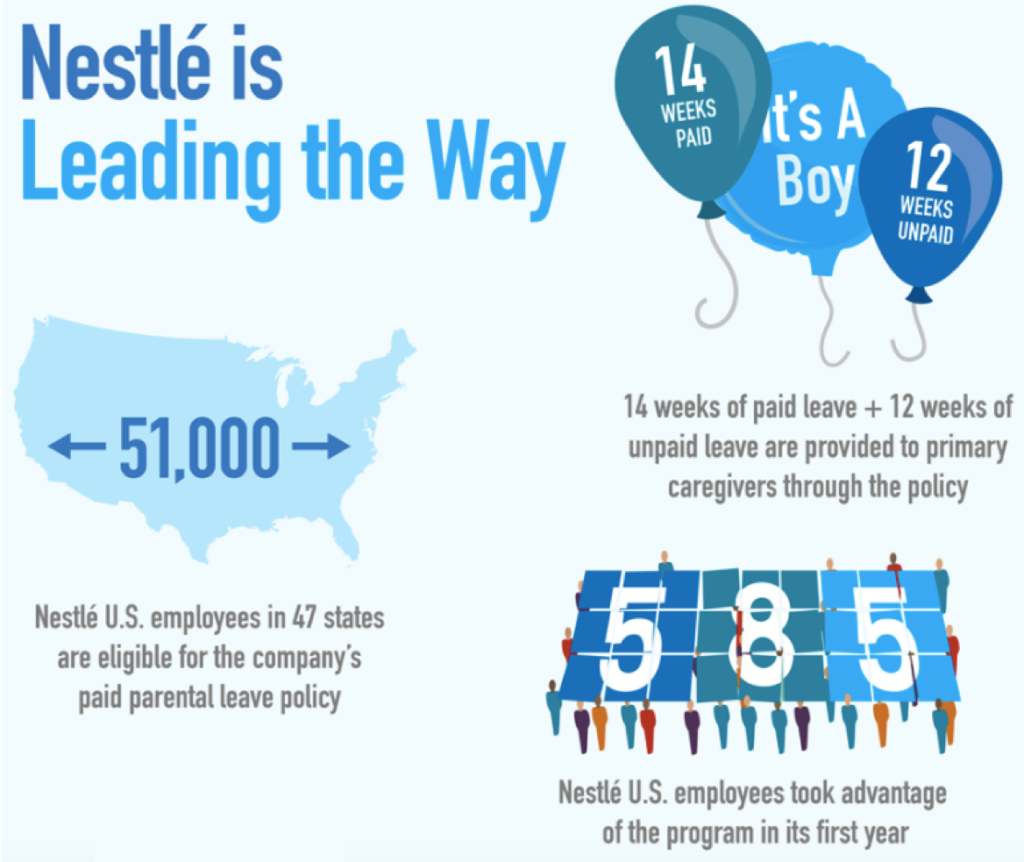
When companies like General Mills and Microsoft announce expanded parental leave policies, we get excited. But all of us can — and should — encourage these companies (and governments implementing the same types of policies) to take the necessary next step and measure policy effectiveness.
Reporting on raw numbers can make for winning headlines, but putting policy into practice in the workforce means measuring what matters.
Reporting Traps
It’s increasingly common for companies and governments to report on raw data as an indicator of the health of a parental leave program. The most frequent stat published is the total number of employees who took leave (e.g. which can be broken down by gender, job function, industry, or seniority). In some cases, data is also presented about the average duration of leave taken, or about changes to medical outcomes and/or healthcare costs. Sometimes, the annual costs of the program are tallied up to showcase how much has been invested in employee welfare.
While all of this is interesting baseline data, the reality is that none of these common metrics really matter. Why? Because they don’t tell us anything about changes to norms and behaviours over time.
If you are putting new parental leave policies in place for a company or government, there are really only two metrics that worth measuring: workforce eligibility, and uptake.
Who’s In and Who’s Out
Measuring workforce eligibility means counting the percent of the workforce that can take advantage of parental leave. Needless to say, the the best policies are those with low barriers to entry.
The most common eligibility calculations weigh:
- Tenure: How long an employee has worked in a job;
- Employment status: What kind of worker a person is (full-time, part-time, zero-hour, contractor/self-employed, etc);
- Number of hours worked per week: Usually a minimum threshold is set.
Taken together, these can result in a substantial narrowing of the eligibility pool.
For example, although the General Mills announcement is a massive step forward for approximately 13,000 US salaried and non-union workers, Bloomberg reports it will impact only 37% of the company’s global workforce. Similarly, various estimates indicate that just 30% of working families qualify for the UK government’s Shared Parental Leave program (although the UK government itself doesn’t publicly discuss this figure).
Whether you think these numbers are high or low, they are at least a starting point for conversation and more organisations need to start disclosing similar figures. If you understand workforce eligibility and are genuinely committed to improving employee and family welfare, you’re equipped make incremental improvements to inclusiveness. Over time, the aim should be to increase the reach of your policy to include as much of the workforce as possible.
Moving the Needle
Once you know how many new parents are eligible for a parental leave policy, the only question that matters is this: how many eligible parents are actually taking leave?
Why? In the context of new fathers, research shows that most dads are still reluctant to use paid leave even when it is made available to them by employers. Similarly, government-backed policies in the UK and Canada continue to suffer very low uptake by working dads.
This hesitation is caused by many factors. If leave is not fully paid, men worry they cannot afford parental leave. Men also fear workplace stigmas, don’t feel supported by their employers and worry that their careers will suffer if they take leave. Men even — quietly — will admit that they don’t feel confident caring for a child at home.
Once tracking employee uptake, companies and governments can (and do) offer targeted support programs to help change workplace culture and drive uptake numbers higher. This is the only true measure of whether your policy is actually reaching people, changing minds and normalising the taking of leave itself.
Case Study – Nestlé USA
In 2016, Nestlé USA launched a new parental leave policy. It provides “Nestlé employees who are parents of newborn children up to 14 weeks of fully paid parental leave and up to 12 weeks of unpaid leave.” Judging from the success stories online, it’s clear that employees who have taken advantage of the policy have enjoyed a fantastic and life-changing opportunity. That alone is something to celebrate. But we — a community interested in making parental leave the norm in the working world — need push the company to be even better. And it starts with better metrics.
Specifically, in 2017, the company published data on the results of the first year, proudly stating they are “Leading the Way”.

Yet when you look at the data, it’s hard to know how well the program is actually doing.
- Eligibility %: The organisation is clear about its eligibility requirements, and sets the hurdles relatively low. As a result, it says, roughly 51,000 US employees are eligible for the policy. That number sounds massive, until you start wondering how big their total US workforce actually is (especially given Nestlé Global employs 323,000 people worldwide). Without knowing the answer, it’s hard to give the program full endorsement. Nestlé USA could make a more powerful claim by restating this fact as percentage of their total US workforce.
- Uptake %: The company says that 585 US employees took advantage of the program in its first year. Again, that sounds great until you realize there is no indication of how many new parents COULD have taken leave. Did an awesome 90% of all eligible parents take leave in the first year? A solid 50%? Or a meagre 5%? This is the number that signals corporate culture change.
Nestle USA is a great example of an organisation that is absolutely doing the right thing in terms of offering paid parental leave to employees, but it can and should offer more than raw numbers to prove it is truly “leading the way”.





One thought on “Measure What Matters: Key Parental Leave Indicators for Companies and Government”
Comments are closed.